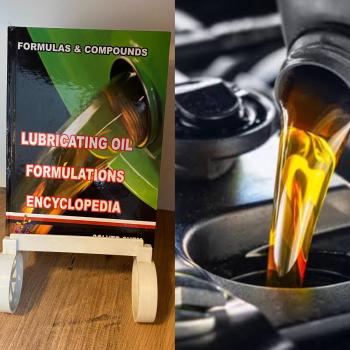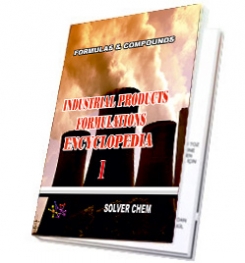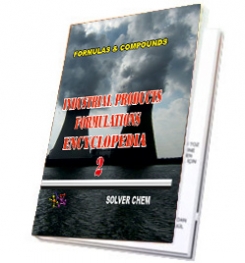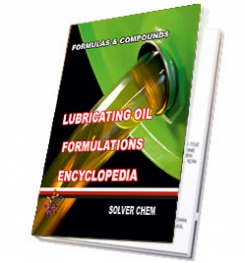
Petroleum is a dark, viscous, foul smelling liquid, a mixture of solid, liquid and gaseous hydrocarbons with traces of salt, rock particles and water.
Composition
Complex mixture of hydrocarbons, chiefly alkanes.
Formation
Petroleum is believed to have been originated from the remains of sea organisms. The micro organisms have largely contributed to the formation of petroleum. Due to the effect of heat, pressure and catalytic action of anaerobic bacteria, the buried remains of sea organisms decomposed very slowly forming petroleum.
Occurrence of petroleum
Petroleum occurs in nature, trapped between two layers of impervious (non-porous) rocks, usually under the sea. Natural gas collects above the surface of petroleum.
Mining of petroleum
Petroleum is brought to the surface by drilling a hole in the Earth's crust and sinking pipes deep down through the impervious cap rock. Natural gas first comes out under high pressure. Then, petroleum is pumped out, collected in tanks and transported, for further processing.
Occurrence and production of petroleum
Refining of petroleum
Meaning
Separation of petroleum into simpler fractions after the removal of unwanted materials.
Method used
Fractional distillation in a fractionating column.
Principle
Difference in the boiling points of the various fractions of petroleum.
Construction of the fractionating column
Fractionating Column
The fractionating column is a tall steel tower attached to an electrically heated furnace. Throughout the length of the tower, there are trays with raised holes covered with loose fitting caps called the bubble caps. These caps allow the vapours to rise up and not descend down. The tower has outlet pipes at various levels along it's length.
Process
- Crude petroleum is pumped into the furnace where it is heated to a temperature of about 400oC. Petroleum is converted to vapours in the furnace.
- The vapours of petroleum are fed into the fractionating column from the bottom.
- As the vapours enter the column, they rise up and gradually get cooled.
- At the bottom of the furnace, the temperature is about 400oC. Here, the component that has a boiling point close to 400oC condenses (liquifies) first and is collected on the tray. From the tray it is let off through the outlet pipe.
- The remaining vapours rise up through the bubble caps.
- When the vapours reach a particular height in the tower, the fraction that has a boiling point close to the temperature at that height condenses on the tray. The remaining vapours continue to rise upwards.
- Like this, at different levels in the tower, different fractions get condensed, collect on the trays and flow out of the outlet pipes.
The following table shows the boiling ranges and uses of some fractions of petroleum:
| �Fractions | �Boiling range | �Uses |
|---|---|---|
| �Petroleum gas | � < 40 �C |
1. Domestic fuel (LPG) 2. Production of H2 3. Production of carbon block |
| �Petrol | �40 — 170�C |
1. Fuel for light motor vehicles 2. Solvent for dry cleaning |
| �Kerosene | �170 — 250�C |
1. Domestic fuel - stoves 2. Illumination — lamps 3. Aviation fuel (for aeroplane) (purified) |
| �Diesel | �250 — 350�C |
1. Fuel for HM vehicles (Lorry, Bus) 2. Generating electricity |
| �Fuel oil | �350 — 400�C |
1. Industrial fuel 2. Fuel for ships |
| �Lubricating oil (Residual oil) | �> 400 �C | For lubricating machine parts. |
| �Paraffin wax (residual oil) | � >400 �C |
1. Fuel in candles 2. Shoe polish |
Note:
- Residual oil is that component of petroleum, which is collected first at the bottom of the tower. It has a boiling range of over 400oC. It can be further distilled separately to obtain lubricating oil, paraffin wax, asphalt etc.
- Most fractions of petroleum are fuels.
- Asphalt, lubricating oil and petroleum jelly are not used as fuels.
RELATED TAGS : what is motor oils,where to use motor oils,motor oils and lubricants,motor oils types,lubricants types,motor ail msds,how to compounds and formulas of motor oils,how to formulations of lubricants,how to formulas&compound of motoro oils,how to make motor oils and lubricants,how to produce of motoro oils,to produce of motoro oils,manufacturing motor oils,producing motor oils,making lubricants and motor oil,what is lubricating oils
SOLVER CHEM

|
|

|
|

|
|



